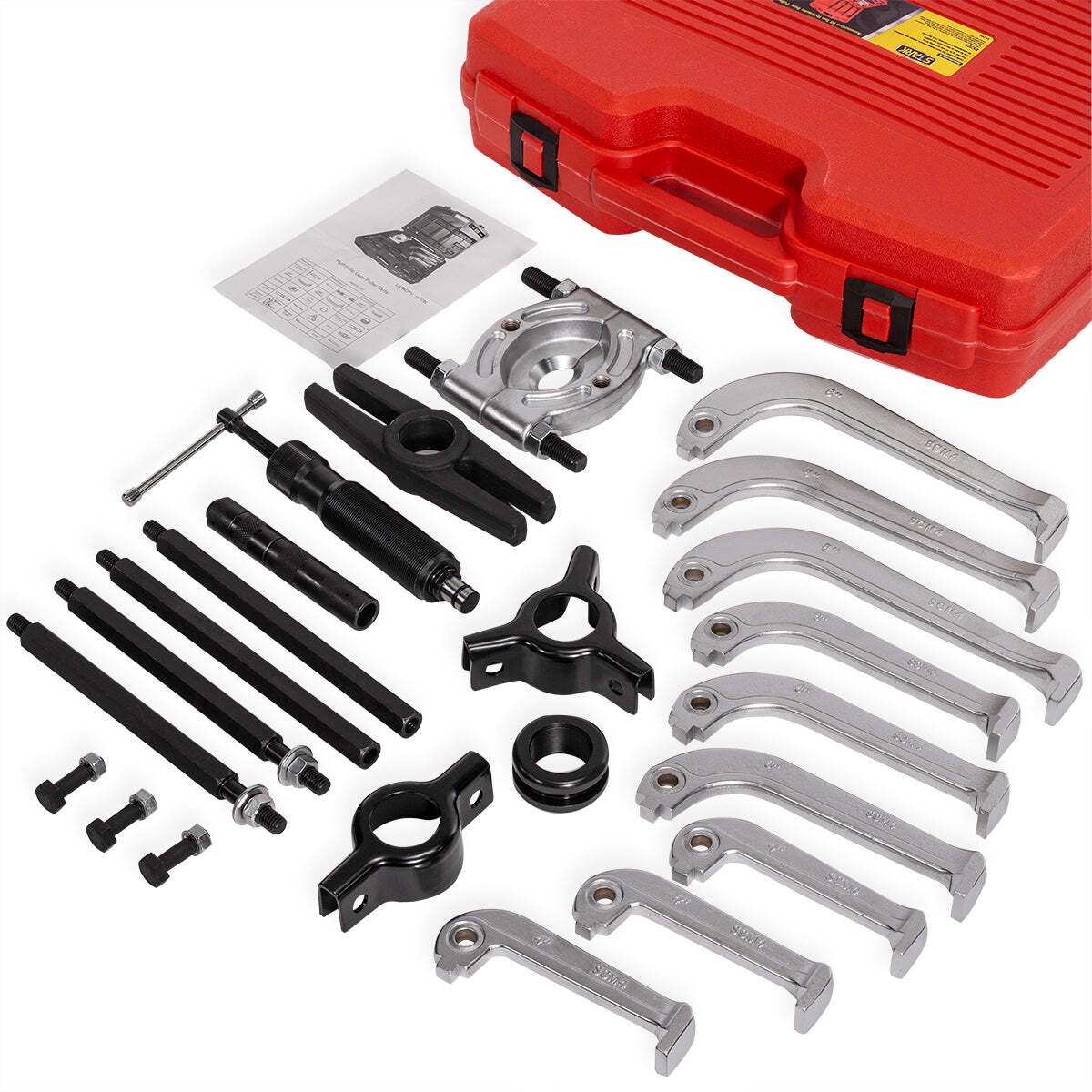Imagine working in an automotive repair job, and you reach for your trusty bearing puller to remove a stubborn component. But as you apply force, you hear an unsettling crack, STOP! Rewind the moment in your mind and think where you went wrong.
This scenario might sound familiar to those who have experienced the pitfalls of using an automotive bearing puller incorrectly. Whether you're a DIY enthusiast or seasoned mechanic, navigating the intricacies of these heavy duty bearing pullers can be tricky. However, by avoiding common mistakes, you can ensure smoother repairs and prevent costly errors down the line.
Let's explore some of the most prevalent blunders to steer clear of when wielding an automotive bearing puller.
Mistake 1: Neglecting Proper Safety Gear
One of the gravest errors when using an automotive bearing puller is neglecting to wear adequate safety gear. To protect oneself from flying debris and potential accidents, wear gloves, proper clothing, and protective glasses. Serious injuries may arise if safety is not given priority.
Mistake 2: Using the Wrong Size Puller
Using an automotive inner bearing puller that is not the right size for the job is a recipe for disaster. Attempting to force a puller that is too small or too large can damage the bearing or the surrounding components, leading to costly repairs.
Always ensure you have the correct size puller for the bearing you are working on.
Mistake 3: Ignoring Manufacturer Instructions
Many users overlook the importance of reading and following the manufacturer's instructions when using an automotive bearing puller. These instructions provide vital guidance on proper usage, safety precautions, and maintenance procedures.
Ignoring them can result in improper use and potential damage to the puller or the vehicle.
Mistake 4: Failing to Lubricate the Puller Threads
Lubricating the threads of automotive bearing puller is often overlooked but is crucial for smooth operation and preventing damage. Without proper lubrication, the threads can seize up or become damaged, making it difficult to use the puller effectively.
Always apply lubricant to the threads before use.
Mistake 5: Overloading the Puller Beyond its Capacity
Attempting to pull bearings or components that exceed the weight capacity of automotive bearing puller is a common mistake. Overloading the puller can strain its components, leading to premature wear and potential failure.
Always check the puller's weight capacity and ensure it is suitable for the task at hand.
Mistake 6: Improper Alignment of the Puller
Improper alignment of the automotive bearing puller can result in uneven force application and potential damage to the bearing or surrounding components. Take the time to align the puller properly with the bearing to ensure even pressure distribution and successful removal.
Mistake 7: Applying Excessive Force
Using excessive force when operating an automotive bearing puller kit is a surefire way to cause damage. Applying excessive force can break or bend the puller arms, strip the threads, or damage the bearing race. Always apply gradual, steady pressure and avoid forcing the puller.
Mistake 8: Neglecting Maintenance and Inspection
Failing to regularly inspect and maintain your automotive bearing puller can lead to performance issues and potential failures. Routinely check for signs of wear, damage, or corrosion, and lubricate moving parts as required.
Proper maintenance guarantees the longevity and effectiveness of your puller.
Choose Wisely, Work Safely!
Overall, avoiding common mistakes when using an automotive bearing puller ensures work safety. Using the correct tools and techniques, and maintaining your equipment, you can ensure efficient and effective repairs without the risk of damage or injury.
For best results, always adhere to the manufacturer's recommendations and take the time to thoroughly examine and maintain your puller. Work smart, work safely, and enjoy the benefits of a well-executed repair job.


No comments yet